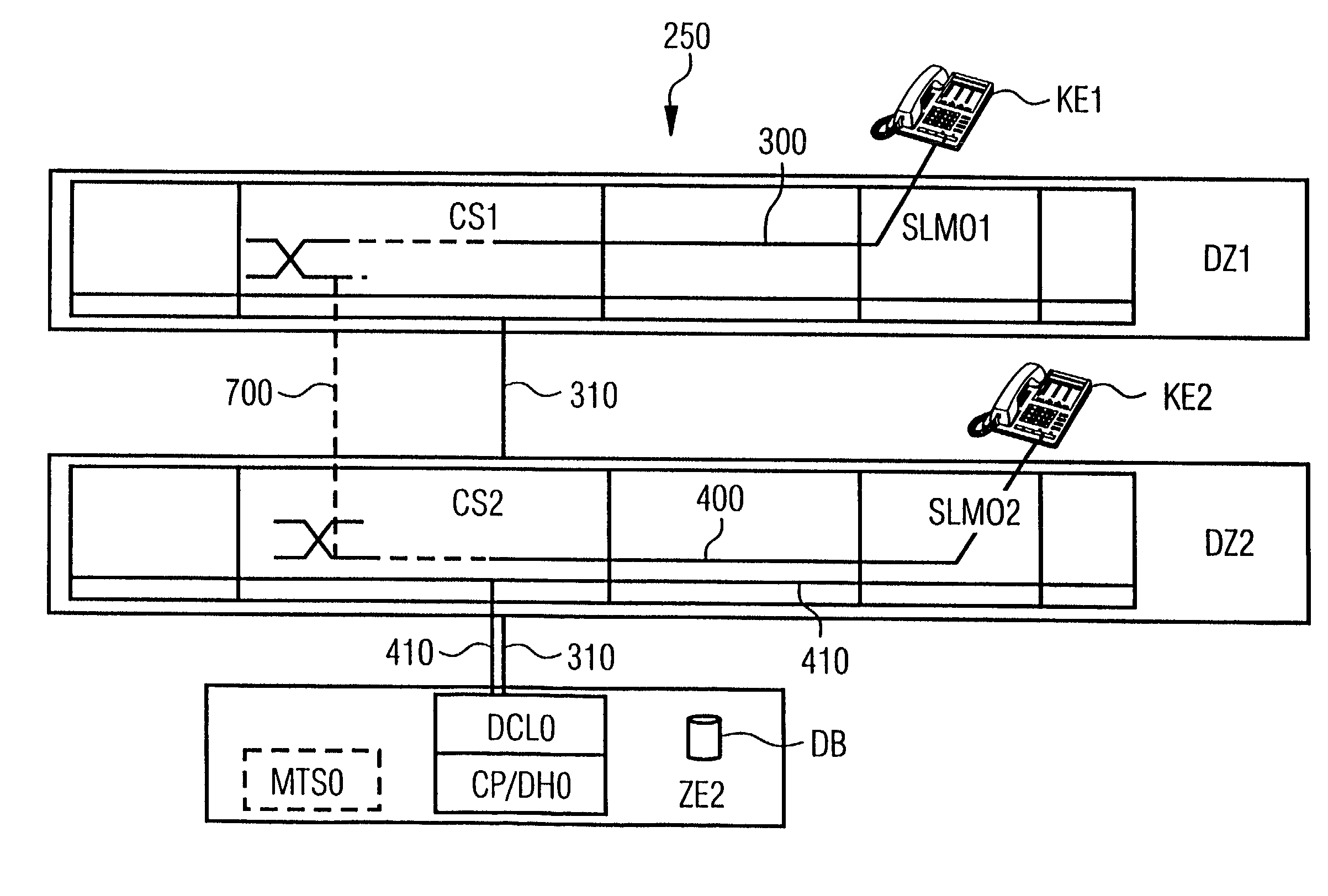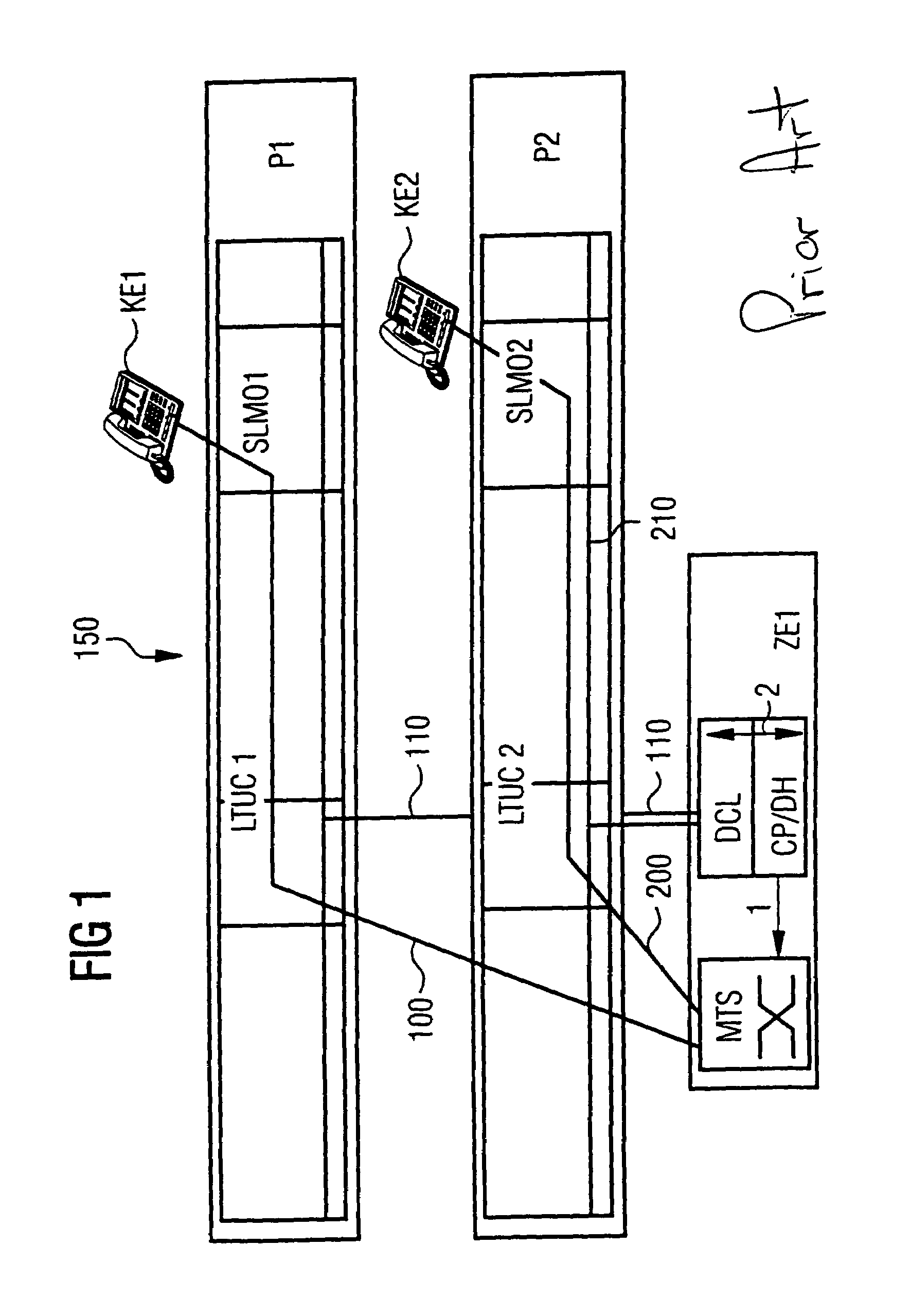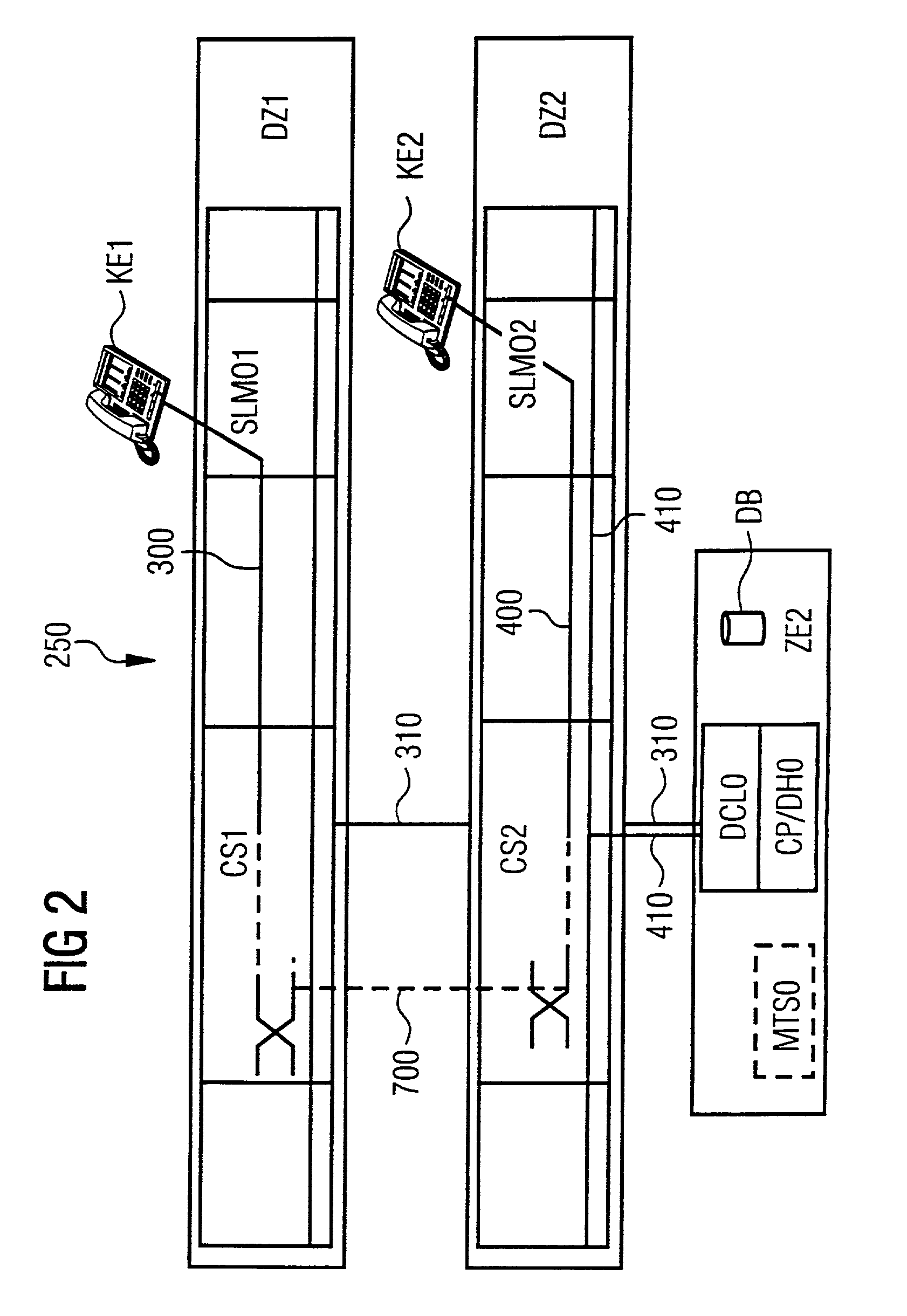Method and arrangement for coupling messages in a central control device with decentralized communications devices
- Summary
- Abstract
- Description
- Claims
- Application Information
AI Technical Summary
Benefits of technology
Problems solved by technology
Method used
Image
Examples
Embodiment Construction
[0032]FIG. 2 shows an example of an arrangement for setting up, clearing down and operating communication connections via decentralized devices which are controlled by a central device. Here, for example, a private branch exchange 250 is represented. The same component parts of the device are denoted by the same reference numerals in FIG. 2 as in FIG. 1. It is notable in the case of this communication arrangement that there are a separate transport network 700 and an independent control network 310 / 410. Such a setup of an exchange has the advantage that already existing networks, in the form of public or private networks, can be used for the transport network. What is more, the control network has to be routed to the central device ZE2.
[0033]The digital or analog communication terminals KE1 and KE2 are represented in this representation in such a way that they are respectively connected to interface modules SLMO1 and SLMO2. Without restricting the invention, however, such terminals ...
PUM
 Login to View More
Login to View More Abstract
Description
Claims
Application Information
 Login to View More
Login to View More - R&D
- Intellectual Property
- Life Sciences
- Materials
- Tech Scout
- Unparalleled Data Quality
- Higher Quality Content
- 60% Fewer Hallucinations
Browse by: Latest US Patents, China's latest patents, Technical Efficacy Thesaurus, Application Domain, Technology Topic, Popular Technical Reports.
© 2025 PatSnap. All rights reserved.Legal|Privacy policy|Modern Slavery Act Transparency Statement|Sitemap|About US| Contact US: help@patsnap.com



